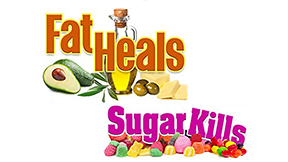The following is a transcription from a Youtube video by Dr. Sten Ekberg titled, “Coronavirus: Your #1 Absolute Best Defense Against COVID-19 – Holistic Doctor Explains.”
Transcribed by Elizabeth Reedy
0:40
We have learned that most of the victims of the coronavirus are elderly. It’s always tragic when a young person dies.
(Dr. Eckberg shows a CNN news clip announcing Jonathan Coelho, a cancer victim, who died at age 32.)
1:04
But the question is about these young people who are being called normal and healthy and without underlying conditions. Are they truly healthy? Is a person who recently had cancer truly healthy? These are some of the questions we’re going to explore. Before we’re done, you’re going to have a totally clear picture.
Have you ever really, really asked yourself what is the difference if two people get infected and one will live and the other one will die? What is the difference if it was the same pathogen? The difference is that one person’s body had the ability to defend itself and the other one didn’t. That’s called an immune system. Some people get infected, and they don’t even notice. That’s what we’re finding now with this coronavirus, that as many as 20-30% of certain populations already have developed immunity and they didn’t even know it.
When a lot of people talk about an immune system, they’re talking about a cell-based immune system with the white blood cells and the things that support the cell-based immune system. For example, the white blood cells have to have Vitamins A, C & D, Zinc and Calcium to support, to activate, to make possible the activity of the white blood cells.
If we don’t have enough of these, then the white blood cells don’t work the way they’re supposed to. But again, these are nutrients. It doesn’t mean that if you take a thousand times as much of these that you’re going to have a thousand times more white blood cells. It doesn’t work like that.
We also have something called specific immunity. If we’ve been exposed to a specific pathogen, then we can develop antibodies, which is the body’s memory. It remembers what that pathogen looked like and it developed an antibody that fits specifically to that pathogen. This immunity could last for many months, or many years, or even a lifetime. That’s what we’re not quite sure about with the coronavirus. Is it just going to last the season or is it going to give us lasting immunity?
More than just the cell-based immune system, we want to talk about the whole-body defenses. The way they talk about the immune system, it’s not really a system, it’s just certain body parts. Your whole body is the immune system. You are the immune system.
You have 40 trillion cells. If those 40 trillion cells are healthy, then the better it will be for their nutritional status, ability to make energy, to do what they’re supposed to do. The healthier you are, the stronger your defenses will be. Ed: Our emphasis.
Some of these cells provide physical barriers. Your skin is a physical barrier. You can get the virus on your skin and not be infected. You can wash it away and you’ll be okay because you had a barrier. You also have a physical barrier in your intestinal lining and your lung lining, and many other types of physical barriers.
You have cell membranes. A virus can only replicate inside a cell, so it has to penetrate a cell membrane. The healthier, stronger, and better working your cell membranes are, the more difficult it is for a virus to make entry. You have mucus membranes that secrete mucus to trap and move pathogens away. You have chemical defenses.
You have cells that spew out free radicals, toxic substances, and hydrogen peroxide that act as poison on these microbes. You have a detoxification system too. These microbes produce toxins and then you need a liver and a kidney and so forth, to filter out and neutralize those toxins.
You have a spleen that can filter out cellular debris and residue. All of these cells and organs are part of your immune system. You are the immune system. And of course your white blood cells, the cell-based immune system is also super important, but they’re only part of the total defense.
(Dr. Ekberg talks briefly about Fauci and the CDC, their jobs and what they do.)
8:06
What about you? Your job is to listen to the good advice of the authorities on how to stop the spread. Other than that, your job is to get healthy. Your job is to optimize your chances to have a positive outcome to beat the virus if you get infected. Ed: Our emphasis.
What is so astounding to me is that there is no talk of getting healthy. There have been millions of hours and millions of miles of writing on the topic of the coronavirus. Yet I haven’t heard anyone talk about health, about how to strengthen your body to increase your chances.
I think the reason for that is that we have a passive medical model. We are told to just do whatever you do. Eat the standard American diet, eat your processed food, eat your sugar. I haven’t heard anyone say to reduce your sugar consumption, for example. And then we’re told to take pills to compensate for the symptoms and the problems created by our deficient food and our toxic food. Ed: Our emphasis. And we are told to get the flu shot and wait for the vaccine.
That’s a passive model. There is nothing about health in the passive model. Why is it that no one talks about health? I believe that it is because as a culture the entire modern world doesn’t know what health is. We have completely equated health with the absence of symptoms. Ed: Our emphasis.
Once we have a symptom, we think we’re sick. With the medical model, the system is to treat the symptom, not to get you healthy. As a matter of fact, we don’t even have a healthcare system in the modern world. What we have is a sick-care system.
At least where I’m from in Sweden it is called “Sjukvård” rather than healthcare. I don’t think it’s because they’re nobler or anything. It just happens that they call it sick care in Sweden. It’s not called healthcare because it isn’t health. It’s about treating sickness.
That’s not a bad thing, but there are different questions being asked in a healthcare model or a sick-care model. In a sick care model, they’re asking how do we treat this symptom? What sort of chemical or pill or medication do we give to suppress this symptom in this crisis situation. That’s not a bad thing. It can be very useful in a crisis, but it has nothing to do with health.
We’ve all heard that there are certain risk factors associated with the coronavirus or Covid-19. One is obesity. If you have a body mass index over 40, your risk of dying increases dramatically. If you have diabetes or one or more of the things associated with metabolic syndrome, such as cardiovascular disease, type 2 diabetes, high blood pressure, or chronic lung, liver or kidney disease. Most of these are associated with insulin resistance, some of them directly and others more indirectly. Ed: Our emphasis.
We also have people who are vulnerable. We’ve all been told to shelter the vulnerable. These are people who in addition to those other conditions, they might have had chemotherapy, or been weakened from smoking or chronic corticosteroids or any other chronic disease or neurodegenerative disease.
The greatest risk factor of all is to be old, being over 70 years old. Why is that? Because by the time you get to that age, you tend to have a little bit of the above conditions. You have more cardiovascular disease, type 2 diabetes, high blood pressure, arthritis. You have accumulated a lot more of these. In short, you are less healthy.
12:26
Most of the risk factors of Covid-19 are associated with insulin resistance. What else does insulin resistance do? Every year around the world it claims 17 million lives from heart attacks, seven and a half million from hypertension, 5 million deaths from stroke, 1.6 million from diabetes, and the list goes on. Ed: Our emphasis.
If insulin resistance already kills this many people, is it really so surprising that it would also have a tendency to kill off more people with coronavirus infection? If we want to put it in the simplest possible terms, then I would say that these people die, and the people from the coronavirus die because they are less healthy, and their bodies have less ability to defend themselves.
13:22
Then the question is, what is health? Who is perfectly healthy? Health is like a continuum. How much cellular capacity do you have to defend yourself? On the one end you would have optimal health when everything is working perfectly, and on the other end nothing would be working, and we have death.
Everything in between is a spectrum, a continuum. The large portion in the middle is probably where the majority of the world’s people are, is called functional illness. These people in the middle are not super healthy and they don’t have a disease. They’re just sort of on their way there.
Perfect health would be over on this end. I don’t think there’s anyone on the planet who has perfect health, because there are heavy metals, chemicals, depleted foods, hormones and so forth. There is enough interference already that we probably don’t really have perfect health. But the people who do their best to take care of themselves and who are examples of health, I think we are going to be somewhere in this range between optimal health and functional illness.
Over on the other end we have people with a diagnosis. These are the underlying conditions, the cardiovascular, high blood pressure, etc. These are people who have made it far down enough that they have been diagnosed with something. [Note: Dr. Eckberg points to a visual showing the health continuum.]
Then what about the people who don’t have a diagnosis right now but who are being called perfectly healthy. In that news clip about Jonathan Coelho, the news anchor said he was a cancer survivor but otherwise healthy.
If you have had cancer, then you’re already way over on this side [Eckberg points to the right] of the spectrum. Cancer is not something that happens overnight to perfectly healthy people, so even if Coelho was a cancer survivor, then he might have made it across the line and gotten a little bit better. But most of the factors that caused the cancer will probably still be there. He was probably not on the upper end of the health spectrum.
That’s what we have to understand. I’m not saying that anyone is perfectly immune. I would never be arrogant enough to think that I was way over here because there are so many things we don’t know. We do know that there are certain things we can do to improve our chances. In my opinion, I believe that a lot of the people who are called perfectly healthy actually are probably over here in the lower end of the continuum. You can be here even if you are 20, 25, or 30 years old. [He points to the less healthy side of his chart.]
16:16
In our current sick care system, the question they ask is how can we treat the symptom? What kind of chemical can we give and what kind of body part can we remove? Those are good questions in a symptom care system or a sick care system.
Now let’s switch around and start asking health questions. Let’s start asking what is required for health. If we had a five-year-old and we asked what does a plant need to be healthy? What are the requirements of a plant? I think the five-year-old could get it right. I think he would say that the plant needs water. If the water isn’t making it healthy, then it also probably needs some sunshine. If we’re giving it water and sunshine and it still doesn’t thrive, then it probably needs some good soil.
I think the five-year-old could also tell us that it has to have all three of these at the same time. We can’t deprive it of one of these three for any length of time and have a healthy plant. We have to have all the things that are required.
That brings us to the next question. What are the requirements for human health? We have chemical, structural, and emotional aspects to our bodies. There are some of those aspects that will increase life, that will provide more life, that will enhance optimum health. There are some that will subtract or interfere.
When it comes to chemical or nutritional aspects, we need fuel. In addition to fuel we also need essential fatty acids, essential amino acids, vitamins and minerals. This is called nutrition. Whole food provides it, whereas processed food does not.
On the downside of the chemical aspects, we have sugar and frequent processed carbohydrates that cause insulin resistance. This will clog up the body and has a congestive and toxifying effect. We have pure toxins that are chemicals and pesticides and so forth.
And then drugs are another form of toxins. They are chemicals designed to interfere. It doesn’t mean that drugs are always bad. They can save a life in a crisis, but it means that they can never make you healthier and never create a long-term solution. They can never raise you from a lower health state to a higher one in the long run.
The body is structural. You have a mechanical aspect. Your body moves. Movements are a requirement. Movements provide the majority of the signals to keep your brain alive. There is virtually no physiological mechanism, no system in the body, that doesn’t work better with movement and that works less with a lack of movement. Movement is required for every system in the body.
Good posture is a requirement for proper signals. Good posture facilitates and normalizes movement. If you have poor posture or if your posture is stuck, then you’re not going to get the proper movement or the proper signaling. If you have poor posture, if you have areas of your body that aren’t moving, then chiropractic is a great way to jumpstart that movement. Chiropractic is not a total movement solution. It’s just getting you to the place where you can move and then you take it from there.
The opposite of good movement is a sedentary lifestyle where you don’t move. If you’re trying to move but you have poor posture, or if you’ve had a lot of trauma that restricts the motion, then you also cannot get proper movement.
Humans are also emotional. When we have peace and joy and purpose, everything that feels good makes your body work better. A little bit of short-term stress is fine, but for the most part, we have to have some good emotions. We cannot have only bad emotions because then the body prioritizes to defend itself instead of healing itself.
The opposite would be anything that feels bad like stress, anger, fear, frustration and feeling overwhelmed.
The absolute best way to defend yourself against the coronavirus or any other pathogen is to make your body stronger so it can defend itself. Take an active role in rebuilding your health, in restoring your body and giving your body all the things that it needs, all the things that contribute to more life. Avoid as much as possible the things that interfere with the building of health.
It looks like the coronavirus might be with us for some time. If it goes away, then who knows what will come next in the long run. Your best defense is always going to be strong health. So why not use the current epidemic as a really, really good reason to start doing something about it. End
 The 2023 Annual Election Period
The 2023 Annual Election Period Note: We have republished this book review and digest with updated comments. You might enjoy reading Sugar Blues in its entirety. To order, please
Note: We have republished this book review and digest with updated comments. You might enjoy reading Sugar Blues in its entirety. To order, please  Fat Heals—Sugar Kills: Book by Dr. Druce Fife
Fat Heals—Sugar Kills: Book by Dr. Druce Fife The Deductible
The Deductible by Lance & Isaac Reedy
by Lance & Isaac Reedy